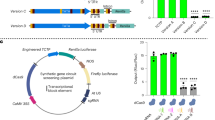Abstract
THE breeding system of varieties of field bean (Vicia faba minor L.) has long been known to be intermediate between allogamy and autogamy, with approximately 1/3 of the seeds set as a result of cross-fertilisation and 2/3 by self-fertilisation1. Cross-fertilisation is due to bees visiting open flowers. Most inbred lines show poor seed set unless their flowers are visited by bees or artificially manipulated (tripped) and are therefore called autosterile; a few lines which do not require tripping are called autofertile2,3. Irrespective of variety, so far as is known, the field bean does not possess a self-incompatibility system for regulating fertilisation4–6; also anther dehiscence always precedes flower opening by one or two days. Why then does the temporal advantage of self pollen over cross pollen not lead to obligate autogamy under field conditions? In an attempt to answer this question, it has been suggested that a spatial separation between discharged pollen and the stigma is normally present, but is abolished by bee visits which simultaneously bring about pollen–stigma contact and chance cross-pollination. According to this hypothesis, autosterile lines have a serious impediment to pollen–stigma contact, whereas, due to a different floral architecture, autofertile lines do not7, although intermediate floral structures also occur. Here we report results of a scanning electron microscopic (SEM) study of the stigmas of an autosterile line (T2) and an autofertile line (T51), which lead to an alternative explanation for autosterility and autofertility.
This is a preview of subscription content, access via your institution
Access options
Subscribe to this journal
Receive 51 print issues and online access
$199.00 per year
only $3.90 per issue
Buy this article
- Purchase on Springer Link
- Instant access to full article PDF
Prices may be subject to local taxes which are calculated during checkout
Similar content being viewed by others
References
Sirks, M. J. Meded. LandbHoogesch. Wageningen 26, 40 (1923).
Hayes, J. D. & Hanna, A. S. Z. Pflanzenzüchtg. 60, 315–326 (1968).
Toynbee-Clarke, G. J. agric. Sci., Camb. 77, 213–217 (1971).
Drayner, J. M. J. agric. Sci., Camb. 53, 387–404 (1959).
Holden, J. H. W. & Bond, D. A. Heredity 15, 175–192 (1960).
Hanna, A. S. & Lawes, D. A. Ann. appl. Biol. 59, 289–295 (1967).
Kambal, A. E., Bond, D. A. & Toynbee-Clarke, G. J. agric. Sci., Camb. 87, 519–526 (1976).
Heslop-Harrison, Y. & Shivanna, K. R. Ann. Bot. 41, 1233–1258 (1977).
Kambal, A. E. J. agric. Sci., Camb. 72, 131–138 (1969).
Toynbee-Clarke, G. J. agric. Sci., Camb. 82, 531–534 (1974).
Author information
Authors and Affiliations
Rights and permissions
About this article
Cite this article
PAUL, C., GATES, P., HARRIS, N. et al. Asynchronous sexual development determines the breeding system in field beans. Nature 275, 54–55 (1978). https://doi.org/10.1038/275054a0
Received:
Accepted:
Issue Date:
DOI: https://doi.org/10.1038/275054a0
This article is cited by
-
Study and QTL mapping of reproductive and morphological traits implicated in the autofertility of faba bean
BMC Plant Biology (2022)
-
An Improved Method for the Fixation, Embedding and Immunofluorescence Labeling of Resin-Embedded Plant Tissue
Plant Molecular Biology Reporter (2007)
-
Controls over pollination and ovule fertilization in Vicia faba
Euphytica (1990)
Comments
By submitting a comment you agree to abide by our Terms and Community Guidelines. If you find something abusive or that does not comply with our terms or guidelines please flag it as inappropriate.



